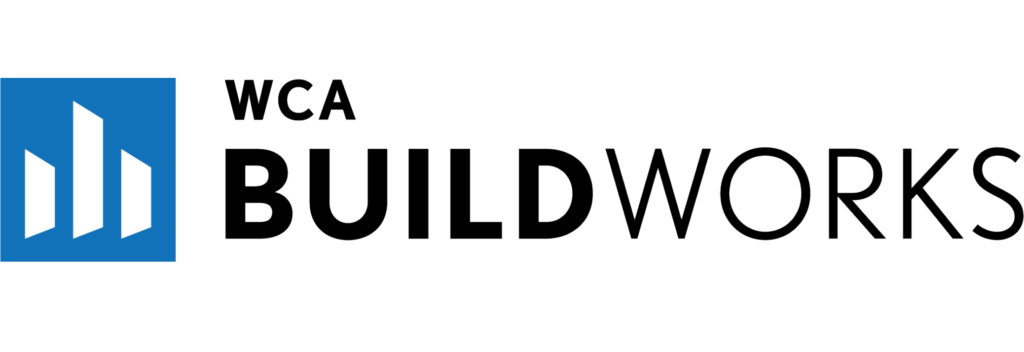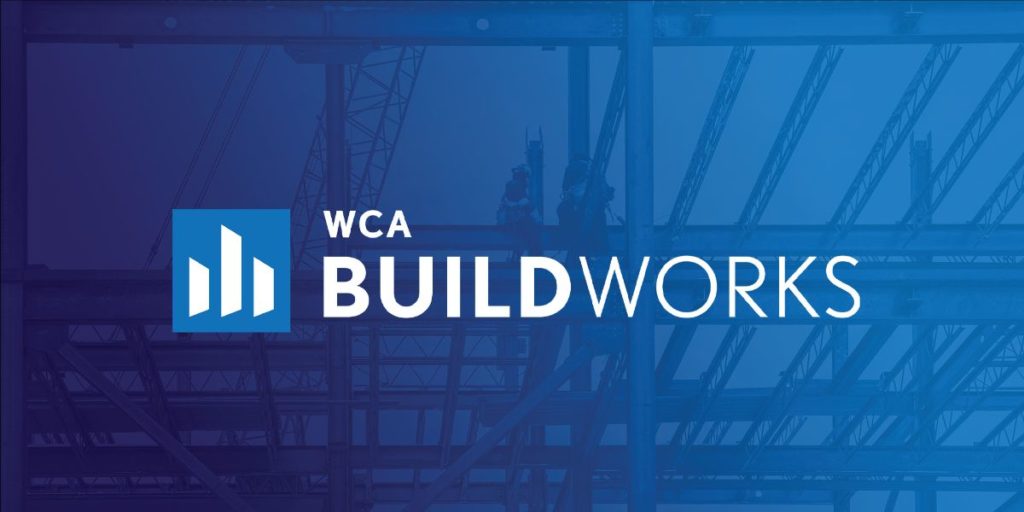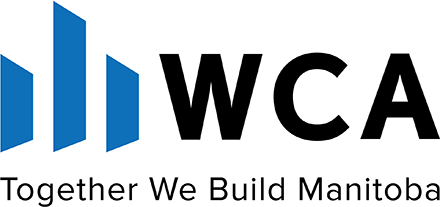Category: Uncategorized
Federal Budget 2022
Federal Budget 2022 – Summary for ICI Construction
On April 7, Finance Minister Chrystia Freeland introduced her government’s 2022 Budget. This Federal budget continues with significant deficits but not as severe as predicted last fall. Last fiscal year (ending March 31, 2022) concluded with a deficit of $113.8 billion, compared to pre-pandemic deficit levels averaging $16 billion (2017-19). The prediction is a deficit of $52.8 billion in the current year. Forward estimates to 2027 do not predict a balanced budget.
This budget was clearly focused on trying to address affordability issues in the home buyers market. Of the 50 times construction was mentioned in the budget, 75% of those mentions refer only to the residential sector.
With that said, there are some construction specific initiatives that will impact the Industrial, Commercial, and Institutional construction sector in Manitoba. These include:
- Labour Mobility Deduction for Tradespeople – Introduction of a Labour Mobility Deduction, which would provide tax recognition on up to $4,000 per year in eligible travel and temporary relocation expenses to eligible tradespersons and apprentices. This measure would apply to the 2022 and subsequent taxation years.
WCA Note: This is a positive initiative that will benefit tradespeople in the short term. This recognises the need for a mobile skills workforce.
- Canada Green Building Strategy – $150 million over five years, starting 2022-23, to Natural Resources Canada to develop the Canada Green Buildings Strategy. The strategy will include initiatives to further drive building code reform; to accelerate the adoption and implementation of performance-based national building codes; to promote the use of lower carbon construction materials; and to increase the climate resilience of existing buildings.
WCA Note: This can be positive depending on how it’s rolled out and Manitoba’s adoption of relevant building codes
- Deep Retrofit Accelerator Initiative – $200 million over five years, starting in 2022-23, to Natural Resources Canada to create the Deep Retrofit Accelerator Initiative, which will provide support for retrofit audits and project management for large projects to accelerate the pace of deep retrofits in Canada, including a focus on low-income affordable housing.
WCA Note: This appears to be an initiative available to non-residential building owners to improve energy efficiency. More details are needed to assess Manitoba Building owners, but this has potential.
- Extend Construction deadline for ICIP Project – Budget 2022 also proposes to extend the Investing in Canada Infrastructure Program’s construction deadline from October 2027 to October 2033. To support this extension, Budget 2022 proposes to adjust the program’s funding profile so that funding is available when needed. This extension recognizes delays caused by the pandemic, and will ensure that provinces and territories can fund priority projects.
WCA Note: Manitoba has moved from a late adopter of the ICIP program funds to nearly complete in a short amount of time. The Budget paper states Manitoba has 99% of ICIP funded committed. This is positive. Extending the construction timeframe is a recognition of the current construction environment where should supply chain delays are impacting project delivery timeframes.
Renovating our Brand

As a member of the construction industry, you know that renovation projects can be just as important as new builds. A well-done renovation can breathe new life into a building, bringing it in to modern times and extending its lifespan.
That’s the approach we’ve taken with our new branding. With the launch of WCA BuildWorks last week we realized we had the opportunity to modernize our brands and logos to better represent our mission and our membership.
With that in mind, we’re thrilled to introduce our updated logos for WCA, WCA BuildWorks and WCA BuildCast:

Our new WCA logo puts the emphasis on how you know us – as WCA – and on the entire membership by increasing the size of our “Together We Build Manitoba” tagline. While we are officially called the Winnipeg Construction Association, we represent all of Manitoba, and our new logo does a better job of representing that.
The new WCA BuildCast and WCA BuildWorks logos complement both our main logo and each other – representing the full suite of Construction Information Services we offer our membership.
You’ll start seeing these new logos on our materials as soon as next week. Rest assured that just because we have an updated look we’re still committed to providing you with the best in construction information, industry education, networking events and advocacy that you’ve grown to expect from us for more than 100 years.
Brand Assets for Members
A WCA Membership shows that you mean business. Want to let prospective clients or business partners know you’re a member? We encourage you to download and display our Member Badges on your website or social media pages.

Click here to browse and download our “WCA Proud Member” badges.
The WCA Newsletter for April 1
The latest edition of The WCA Newsletter is now available here.
WCA BuildWorks is now live

As of 3:00 p.m. today WCA’s new Online Planroom, BuildWorks, is now live!
You should have gotten an email at 3:00 p.m. asking you to set a new password for WCA BuildWorks – if you didn’t receive an email, first off check your junk folder – if you still can’t find it can access BuildWorks here and request your password through the “Forgot Password” button.
If you’ve previously bookmarked the old BuildWorks Canada URL, we recommend updating that bookmark to the new URL (https://login.onlineplanservice.com/login.aspx?sender=WCAO).
We appreciate your patience as we make this transition. We’re confident the new and improved BuildWorks will make all our members lives easier!
To help you navigate the new system we’ve also developed some short videos and a training manual to get you started. You can access these resources inside the WCA BuildWorks support centre here.
If you have any questions or concerns, please don’t hesitate to reach out to us at cis@winnipegconstruction.ca.
BuildWorks Platform Transition

As a WCA Member and BuildWorks Canada user, we know that fast, accurate and timely construction information is critical for your business. To make sure you get the most out of your membership we’re constantly working to improve your user experience inside our products.
That’s why on March 30 we’ll be moving away from the current BuildWorks Canada platform. As you may have noticed, we’ve had issues with this platform for several months, leading to slow loading times, missed reports and other persistent issues. After March 29 we will not be loading any new information into BuildWorks Canada.
Our new product will be called simply BuildWorks, and we’re confident that after the transition period our members will enjoy a more robust and faster product.
Next week we’ll be sending you an email with information on how to create your new login. Before the transition, you’ll want to make sure to do these two important things:
- Note what projects you’re tracking – this information will not carry over
- Note what projects you are on the bidders list for – this information will not carry over
*Please make sure to save the Project Name for these – not the Project Number. Project Numbers will not be carried over*
For now, that’s all you need to do. We’ll be in touch several times before the transition to make it as smooth as possible for everyone involved.
We thank you in advance for your patience with this platform transition. We know that change is never easy, but this transition will make for a better and more productive user experience for all WCA Members.
If you have any questions, please don’t hesitate to reach out to us at cis@winnipegconstruction.ca.
The WCA Newsletter – March 18
The latest edition of The WCA Newsletter, including an update on Prompt Payment, is now available here.
The WCA Newsletter – March 4
The latest edition of The WCA Newsletter is now available here.
Introducing our 2022 Board of Directors

It was a monumental day for the Winnipeg Construction Association on February 16, 2022, as we welcomed the first ever woman to Chair our Board of Directors, Ellowyn Nadeau from Red River College Polytechnic.
Ellowyn replaces John Enns (The Net Effect), who will assume the role of immediate past chair. We thank John for his two years as our “Virtual” Chair during the era of COVID – it was a unique challenge that he was more than up to the task for.
We also say goodbye to some familiar faces on the Board of Directors – Jeff Olafson (Gardon Construction Ltd.) and Dan Bockstael (Bockstael Construction Ltd.) are both moving on and we thank them for their many years of service and contributions to WCA and the entire industry. Peter Grose’s term as immediate past chair is over, and we wish him nothing but the best. We’re sure we’ll see all three of you at networking events in the near future!
Their empty seats will be filled by Alain MacNair (Bockstael Construction Ltd.), Craig Hildebrandt (Westland Construction Ltd) and Daniel Hartley (Powertec Electric Inc.) Welcome gentlemen, we look forward to working with you!
Other changes to the Board of Directors for 2022 see Roger Tuk (M.D. Steele Construction Ltd.) move into the Vice-Chair role, Peter Bernatsky (PSB Integration Inc.) takes over as Treasurer and Teri Urban (Parkest Projects Ltd.) is the new CSAM Advisory Chair.
We also took the opportunity to recognize former WCA Board Chair Randy Clegg as an Honourary Life Member. Thanks for everything you’ve given back to the industry Randy!
WCA Board of Directors 2022
Executive
Chair: Ellowyn Nadeau, Red River College Polytechnic
Vice-Chair: Roger Tuk, M.D. Steele Construction Ltd.
Treasurer: Peter Bernatsky, PSB Integrations Inc.
Immediate Past Chair: John Enns, The Net Effect
President: Ron Hambley, WCA
Division Chairs
Electrical: Bryan Trottier, Trotco Electric Inc.
Manufacturers and Suppliers: Mark Kennedy, Star Building Materials Ltd.
Mechanical: Brad Mason, DMS Industrial Constructors Inc.
Trade Contractors: Chris Precourt, Econo Wall & Ceilings Ltd.
General Contractors: Travis Paul, Bird Construction Group
CSAM Advisory: Teri Urban, Parkwest Projects Ltd.
Directors at Large
Alain MacNair, Bockstael Construction Limited
Terri Randall, Ambassador Sales (1986) Inc.
Shane Storie, SRS Signs & Services, Inc.
Craig Hildebrandt, Westland Construction Ltd.
Laura Lomow, Ellement Consulting Group
Soo Lee, Ironclad Developments Inc.
Daniel Hartley, Powertec Electric Inc.
David Van Hooren, PCL Constructors Canada Inc.
Jim Brown, Penn-co Construction Canada (2003) Ltd.
Standing Committees:
John Schubert – WCA Past Chair Committee Representative
Alyssa Malenchak, Bird Construction Group – MWC Representative
Stacey Gagné, Signex Manufacturing – YCLM Representative
If you missed our Annual General Meeting and would like to view the recording, it’s available here.
The WCA Newsletter – February 4
The latest edition of The WCA Newsletter is now available here.
The WCA Newsletter – January 21
The latest edition of The WCA Newsletter, including a look at Premier Stefanson’s cabinet shuffle, is now available here.
